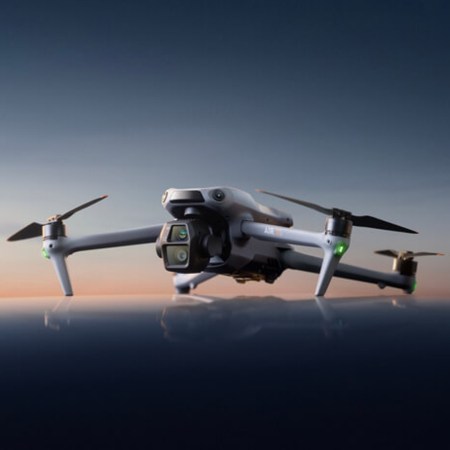Downside of owning a drone: besides the whole (il)legality of using them, they’re kind of bulky.
Ideally, you’d be able to fit one into a backpack (or even a briefcase) and forget it until you needed it.
Enter the Hover Camera. Billed as “the world’s first autonomous flying camera drone” and designed for both indoor and outdoor use, Hover is the debut product from Zero Zero Robotics.
It’s impressively tiny. Built from lightweight carbon fiber, the device weighs a mere 240 grams (a bit more than 8 oz.) and folds up into a square the size of a small hardcover book.
“We had a couple of design goals with the Hover,” explains CEO/founder Meng Qiu Wang, a former Twitter engineer and Stanford PhD who gave us a test run early last week. “We wanted it to be portable, we wanted it to be safe — that’s why the carbon fiber mesh is over the propellers — and we wanted it to be user friendly.”
On the last part: all the Hover’s functions are executed through a single button, as well as a simple-to-use smartphone app that handles navigation and video/photo needs (including a live feed from the camera).
While the camera is low on bulk, it’s heavy on tech. Right out of the gate, you’ll have 13MP photos and panoramic 4K video (which, thanks to some proprietary tech, looked amazingly stable during our test run). A typical flight lasts eight minutes and can take up to 32GB of video. It also uses a combo of AI, sonar and a ground-facing camera to navigate, as opposed to the GPS systems most of its competitors rely on.
The drone launches as a beta today (April 26th) and will be available for preorder later this summer. To get in on the beta, you need to apply on the drone’s website — the founders are looking for “creative” uses of the camera, mentioning parkour performers and basketball players as ideal candidates.
Caveats: besides not being available immediately, the Hover is a bit loud: think a very, very angry swarm of mechanical bees. The device takes about 10 seconds to power up, though Wang says they’re trying to cut that in half by the time the preorder hits.
Keeping it in the air for more than 10 seconds? That’s all on the pilot.
This article was featured in the InsideHook newsletter. Sign up now.























